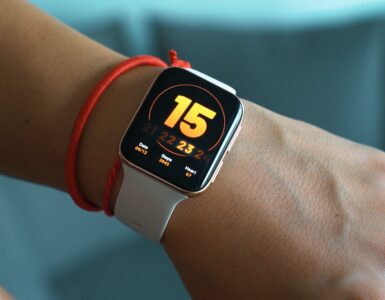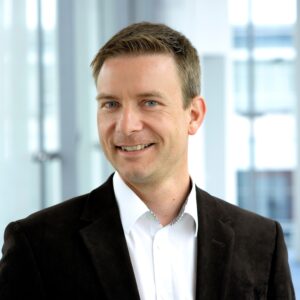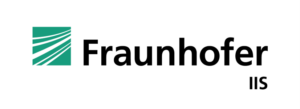In a world that is becoming more interconnected and data-centric, protecting sensitive data is an increasingly urgent challenge. However, in recent years, the way such data is stored and managed has evolved significantly. One emerging solution that is gaining momentum around the world is the use of cloud technologies to store and process data, in particular patient data. Cloud solutions offer an innovative and efficient way to access a secure and scalable infrastructure while meeting strict data protection and regulatory requirements. Consequently, in order to counter US-dominated providers and, more importantly, to comply with European laws and regulations, a pioneering initiative has emerged in Europe to regain control over data and strengthen digital sovereignty. Christian Weigand, head of the Mobile Health Lab at Fraunhofer IIS and member of the national GAIA-X project Team-X, explains the approach.
What was the motivation behind GAIA-X?
Christian Weigand: GAIA-X represents an initiative that strives for a European alternative as an answer to American cloud service providers. Especially with regard to data protection and data security, we see the need to create independent solutions. With the US, we face the challenge that the exchange of health data is restricted due to American laws. These laws cannot provide us with the necessary security that no one can gain unauthorized access to our data. Therefore, GAIA-X as a European initiative is pursuing the goal of building a cloud solution and establishing a cloud standard for Europe. In the Team-X project, we are working together with various partner companies from Bavaria. We at Fraunhofer IIS are primarily concerned with defining the data space and the data models that are necessary for semantically interoperable data exchange.
What specific steps should be taken to implement this idea?
Our goal is that in future all data collected in connection with a patient will be accessible digitally and in any form.
No matter whether it is radiology findings, doctor’s letters or nursing data – everything that has to do with a person’s health should be addressable in some way (also across sectors) and brought together by GAIA-X. The decision-making power always lies with the patient himself. He is the owner of his data and has the possibility to view them and decide what should be done with them. This aspect is very important because we believe that patients should have the right to decide on the use of and access to their own data. This can occur in different care situations, for example, when the patient is referred from a GP to a radiologist or from a radiologist to a clinic, and back again. Our goal is to have patients provide the attending physicians with the data that has already been collected during their visits to the practice, but only the data that is relevant to their current treatment. This has the advantage that duplicate examinations can be avoided and there are no more media breaks, such as the exchange of doctor’s letters by fax, telephone, or a CD, which I, as a patient, have to take home.
How does this project differ from the electronic patient record (ePA)?
Our goal is not to replace the existing electronic patient record, which is dictated by the telematics infrastructure and legislation in Germany. Rather, we want to include the electronic patient record in our approach. We firmly believe, however, that ePA cannot meet all the challenges at once, especially not in a short time.
How far advanced is the development of the cloud solution?
The development of this project has only recently begun and has now been running for a year. In the initial phase, the focus was on defining the goals. We selected two concrete use cases, one from the field of geriatric care and one from the Erlangen University Hospital, which focuses on women’s health, more specifically on breast carcinoma. These use cases were chosen for a good reason: When patients are diagnosed, especially during diagnostic evaluation phase they often switch back and forth between outpatient and inpatient care. They come to the clinic with a suspected diagnosis, are examined there and then sent home. This is followed by various sessions in the clinic, possibly longer inpatient stays, but also further outpatient appointments. The Erlangen University Hospital in particular strives to provide comprehensive outpatient care and monitoring. Therefore, this is an excellent example to show the advantages of a digital data room. The seamless data flow between GP and clinic can successfully overcome the numerous media discontinuities that occur in this transition between outpatient and inpatient care due to Germany’s health system structure. This digital data space can also be applied in the field of care, especially in old age. Although the transition between care and non-care situations is not that frequent, as patients often remain in the nursing home until the end of their lives, there are still many interactions between GPs, clinics, and nursing homes where data exchange needs to take place. Unfortunately, nursing care is still given too little consideration in the German health care system, and it is therefore important that we can overcome the sector boundaries between outpatient, inpatient and nursing care here as well.
How much work would be required of medical practices to implement this change in patient data management?
The GAIA-X approach is to create a comprehensive data space for all systems. This means that the major manufacturers of medical practice, administrative and clinic information systems should implement appropriate interfaces to work seamlessly with GAIA-X. Our two selected use cases serve as a blueprint to show what such collaboration can look like in the future. However, it is clear that software vendors need to undertake broad implementations of such interfaces. We therefore see ourselves in the role of setting the standard and guidelines to support and drive this development.
How does the patient get access to his or her data?
Ideally, a user-friendly app will be developed through which the patient can view his data and determine for himself which information he wants to share with doctors. In addition, we aim for the secondary use of the data for research purposes. Here, too, the power of decision naturally lies with the patient, who is free to decide whether and which data he might want to share for research purposes. He can also choose the option of providing the data anonymized or pseudonymized.
Can you anticipate an increase in patients’ willingness to share their data for research purposes in Germany, perhaps by consenting to data sharing in the app?
Various studies have shown, especially from affected patients who deal with a chronic disease themselves, that they tend to share their data generously. These results suggest that there is a broad willingness to share data, in contrast to the possibly lower willingness in organ donation. Patients want to help so that other patients do not suffer the same as they did, and they hope that future generations can benefit from new medical advances.
Another abbreviation that is often used is EHDS. What exactly does it mean?
EHDS is another European initiative called the European Health Data Space. This initiative aims to create a space in which the secure exchange of health data between care providers, research institutions and research-based companies is made possible.
What are the challenges facing the EHDS?
Our goal is to make the various data representations in clinics, outpatient practices, at home, and in care tactically and semantically interoperable. In doing so, we rely on international standards that are also used in the telematics infrastructure. Currently, patients often do not know exactly where their data is stored. Some information may be in the doctor’s office or in the doctor’s information system, while others are sent home as a doctor’s letter or handed over on a CD by the radiologist. We want to overcome this fragmentation and diversity by discussing how we can make these different data sources digitally accessible. Another obstacle is that many of these sources do not yet have digital interfaces to enable effective data exchange. These problems need to be solved not only for Germany but for the whole of Europe. Many European countries are far ahead of us in digitalization in the health sector. Capturing all these different developments and making the data exchangeable via semantically interoperable interfaces is the great challenge we face with GAIA-X and the EHDS.
With our solution from the GAIA-X project, we hope to create a kind of blueprint that can be applied to the entire data exchange in Europe.
Therefore, we are already using internationally recognized standards and code systems for the definition of the data models, which should facilitate the exchange.
Is there already a planned timeframe for the project to enter the test phase?
We are aiming to successfully complete the project within a period of two years. We will develop demonstrators and technically implement parts of the use cases we have defined in order to prove their feasibility. After that, we will see how we can bring individual use cases into the test phase, also depending on the development of the EHDS.
Image copyright: iStock/NanoStockk







Add comment